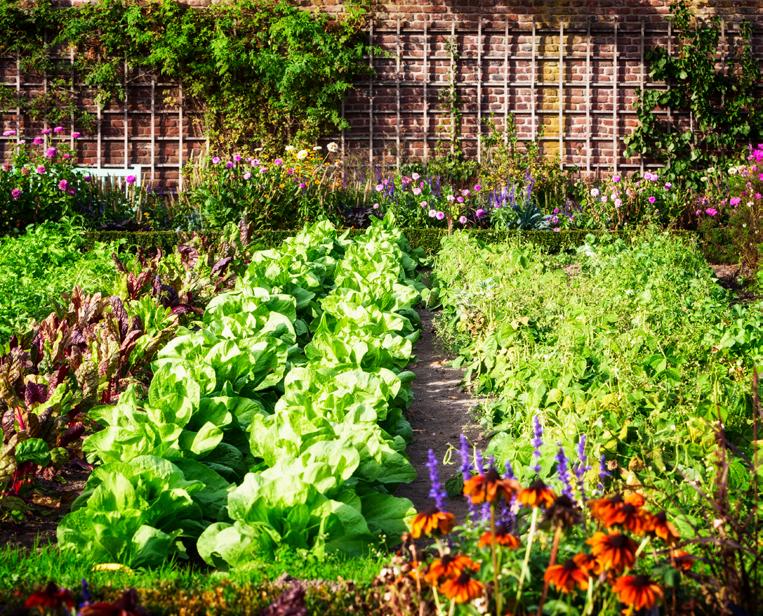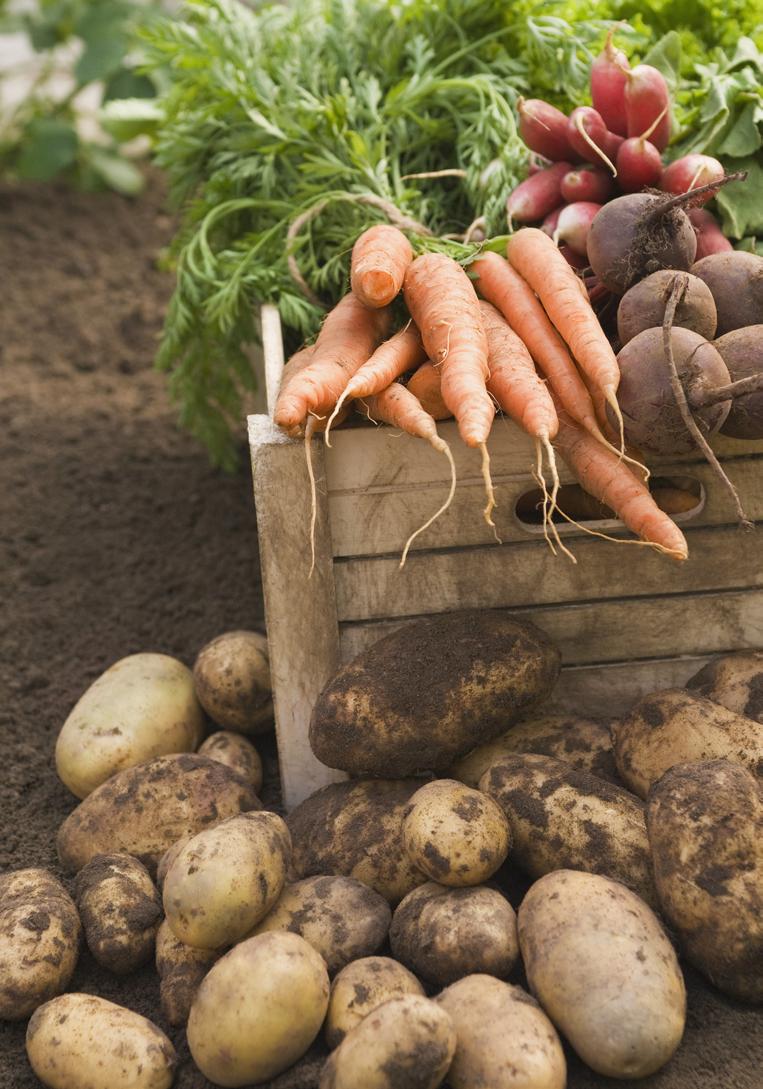
3 minute read
Can Growing Food Really Save You Money?
Our society has become rather dependent on supermarkets and their ability to provide everything we need, at any time of year at a reasonable price. However, recently, our faith has been severely shaken by soaring prices, supply chain issues and woefully limited selections.
It seems the time has come for the nation to get back a little of that ‘Dig for Victory’ spirit we once embraced and take back some control over what we eat, how it’s produced and how much it costs us. Yes, growing your own food, or at least some of it, can save you money on your grocery bills. It’s just a case of finding an approach that suits you and knowing where to focus your efforts and what is worth investing in for the future.
Getting started does not have to be expensive; you do not need elaborate raised beds; many crops will grow very well in containers as simple as a large flowerpot Just remember to always choose containers with a depth of at least 25cm and with decent drainage.
If you want to dedicate a little more room to your self-sufficiency drive, a simple no-dig bed can be created cheaply by spreading a double layer of scrap cardboard (remember to remove any tape) over an area of lawn to suppress the grass. Add a 10cm layer of compost on top and you are ready to go. The cardboard will break down, leaving what is essentially a bottomless veg bed. It’s also a great idea to find a composting solution that works for you so that you can ultimately stop buying commercial compost. There’s an option for every space, including heaps, bins, worm farms and bokashi.
Some crops have more bang for your buck than others, so it is well worth focusing your attention on these rather than lower yielding tricky crops. Tomatoes are always at the top of my list, as it is realistic to become close to selfsufficient in a relatively small space. Fast growing and super productive all summer, freeze any excess whole to enjoy in sauces and cooking through the winter. Other highly productive crops include French and runner beans, rhubarb, chard, perpetual spinach, pumpkins, courgettes, cucumbers, kale, chillies, beetroot, nasturtiums and shallots. Other crops such as brassicas, melons, sweetcorn, sweet peppers, rocket and aubergines can be harder to get a high yield from, so your precious garden space may be better used elsewhere.
There are all sorts of clever tricks for saving money while growing food. Firstly, I’d recommend only growing open-pollinated varieties; that’s basically anything that doesn’t say F1 or hybrid on the seed packet. You can save the seed of open-pollinated plants, meaning that you only have to buy the seed once and never again. Rather than buying expensive seed composts, I propagate all plants in multi-purpose composts. Aim to find one with a finer texture or pass the compost through a soil sieve before use, you can also split it 50/50 with coir for tiny seeds. Food punnets can make great seed trays. They have perfect drainage holes in the base. Also, unlike most propagation equipment, when you are done, they can be recycled.
For any kit or equipment that you do have to buy, invest in the best quality you can afford, then take care of it. Buying the cheapest option may be a false economy if it quickly breaks.
Seek out strong seed and module trays that can be washed and reused year after year. Invest in a whetstone along with secateurs and sheers and take time to clean and oil them. They will reward your efforts with a lifetime of service. Buy strong spades, forks and tools and store them in a shed where the weather can’t shorten what should be decades of life. Look after your kit and each item should serve you well, saving you money in the long run.
Top tips:
• Plant fruit trees for many years of harvests
• If you buy plants, keep the pots to reuse
• Embrace the idea of preserving food using methods such as freezing, canning, drying, dehydration and fermentation so you can eat homegrown food year round
• Cucumbers and courgettes are extremely productive but are hard to preserve; try to only grow what you can eat in summer
• Consider making room for some more expensive gourmet foods such as garlic, mushrooms, speciality herbs, ginger and chillies
• Make the most of all your space! How about herbs in the window boxes, edible ornamentals in the flower beds or mushrooms in the airing cupboard?
• Pumpkins are great winter food, but the plants can be huge. Consider growing smaller fruiting varieties over arches to save space
• Make some room for drying beans such as borlotti, another great winter food supply
• Try to pick crops so that they can give you multiple harvests. For example, slice spring onions off above the roots and they will regrow or harvest just the outside leaves of the lettuce rather than picking the whole head
• Share your excess with friends, family and neighbours and encourage them to do the same – a great way to make friends through food and get hold of homegrown crops you didn’t have room for












